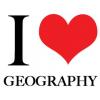- 0 replies
- 955 views
- Add Reply
- 0 replies
- 918 views
- Add Reply
- 0 replies
- 643 views
- Add Reply
- 2 replies
- 3,108 views
- Add Reply
- 0 replies
- 1,102 views
- Add Reply
Comprehensive model uses airborne LiDAR data to predict walking travel times with unprecedented accuracy

By Lurker,
You're a hotshot working to contain a wildfire. The conflagration jumps the fire line, forcing your crew to flee using pre-determined escape routes. At the start of the day, the crew boss estimated how long it should take to get to the safety zone. With the flames at your back, you check your watch and hope they were right.
Firefighters mostly rely on life-long experience and ground-level information to choose evacuation routes, with little support from digital mapping or aerial data. The t
U.S. GPS modernization faces delays, technical challenges: GAO report

By Lurker,


A new U.S. government report highlights mixed progress in the modernization of the Global Positioning System (GPS), citing advancements in satellite and ground equipment upgrades alongside persistent delays in some areas.
The Government Accountability Office (GAO) report, released Sept. 9, reveals that the Space Force is grappling with technical hurdles in next-generation GPS satellites and ground systems. These challenges have eroded schedule margins, potentially pushing back the delivery
OneWeb launches alternative navigation service amid GPS vulnerability concerns

By Lurker,


Satellite communications company OneWeb unveiled a new positioning, navigation, and timing (PNT) service amid global concerns about GPS vulnerability to jamming and interference in critical sectors such as defense, aviation and emergency services.
The service, called Astra, aims to ensure uninterrupted communications for OneWeb’s satellite broadband customers, even when GPS or other global navigation satellite system (GNSS) signals are unavailable or compromised.
The system utilizes a
Idrisi Terrset to Terrset liberaGIS
By barronqj,
Dear TerrSet/IDRISI Community,
We are writing to share important and exciting news: Effective December 2, 2024, a new open access version of TerrSet/IDRISI will be released. Made possible by Clark Lab's merger with the new Clark Center for Geospatial Analytics (Clark CGA), the new version will be free to all users. This is the realization of a 37-year dream – to make the software accessible to everyone, everywhere.
Between now and December 2, a series of progressive d
The Importance of Building a GIS Portfolio: A Guide for Students and Young Professionals

By Lurker,
The Role of a GIS Portfolio: More Than Just a Resume
A resume provides a snapshot of your education, skills, and experience, but a GIS portfolio offers a deeper dive into what you can actually do. It's the difference between telling and showing. While a resume might list "proficiency in ArcGIS" as a skill, a portfolio can demonstrate this proficiency through detailed examples of projects you've completed, maps you've created, and problems you've solved using GIS technology.
Your GIS po
-
Forum Statistics
8.7k
Total Topics43.5k
Total Posts




